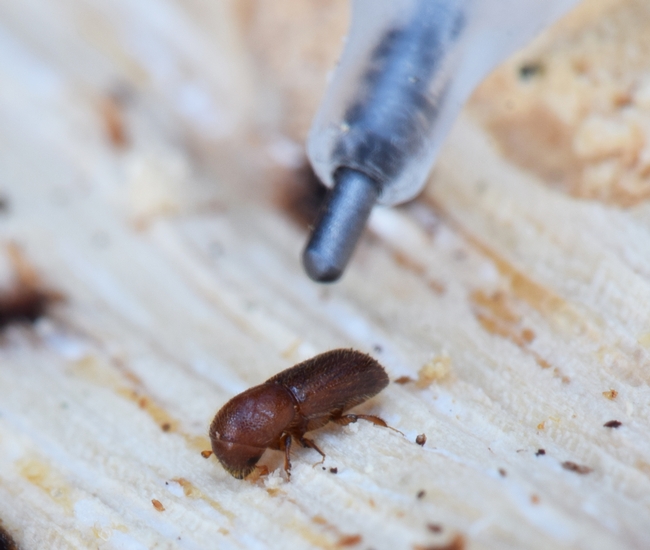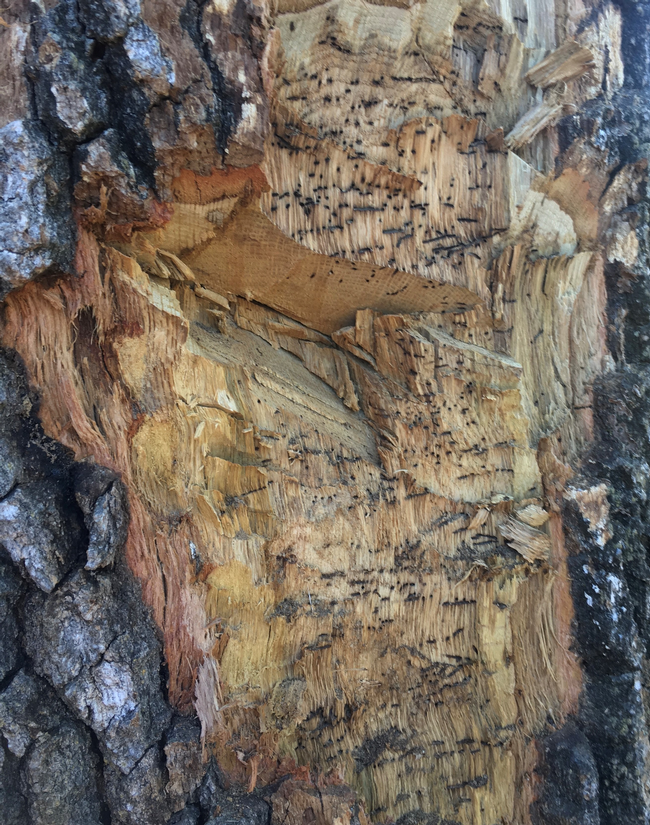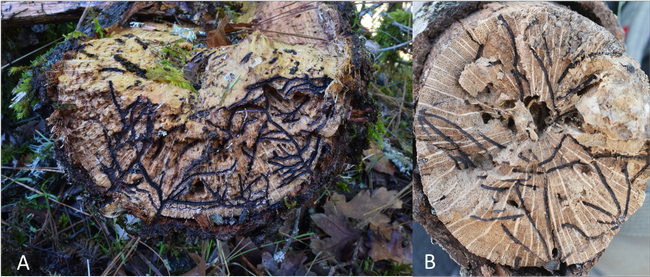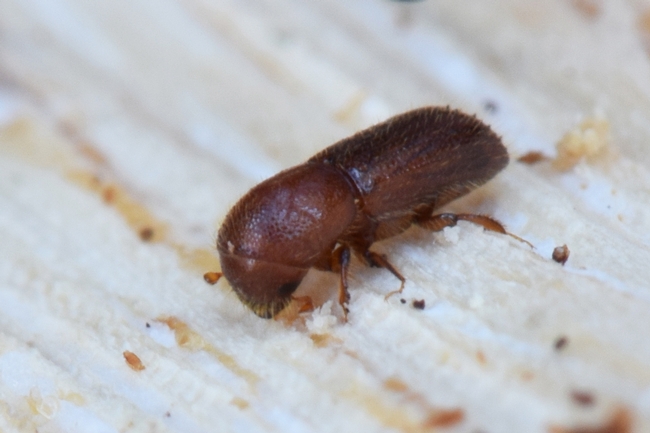
The Mediterranean oak borer (Xyleborus monographus), or MOB, is an invasive ambrosia beetle that was first collected from declining oak trees (Quercus spp.) near Calistoga (Napa County) in 2019 (Fig 1). Subsequently in early 2020, the beetle was detected in the neighboring counties of Lake and Sonoma, and more recently a separate infestation was discovered in suburbs near Sacramento. MOB is native to the Mediterranean regions of Europe, the Middle East, and North Africa and was likely introduced to North America in infested wood material. Within its native range MOB is a pest primarily of dead and dying oaks. In California, MOB has been detected in valley oak (Q. lobata) and blue oak (Q. douglasii). Given the cryptic nature of the insect, the extent of the infestations, and presence of dead trees with evidence of the beetle, the insect has likely been in California for more than five years.
Ambrosia beetles are interesting insects because they carry symbiotic ambrosia fungi which they cultivate along their galleries (boring tunnels) for food. Most ambrosia fungi are weak pathogens (typically only colonizing the tissue near the galleries), but a fungus associated with MOB, Raffaelea montetyi, appears to cause wilt disease in cork oaks in Portugal. This fungus and several others associated with MOB, have been recovered from infested trees in California and research is underway to determine if these ambrosia fungi could cause similar diseases in North American oak species.

MOB appears to initially attack the canopy of host trees where it kills branches, with persistent infestations spreading to the main stem and eventually killing the tree (Fig. 2). The extensive network of MOB galleries can weaken trees and make them more susceptible to failure. Thus far, trees in California with MOB infestations appear to have been stressed by other biotic and abiotic factors prior to MOB colonization, so it is unclear if the insect and its ambrosia fungi can infest and kill healthy trees.
Signs of MOB infested trees are declining canopies, tiny exit holes and boring dust in cracks of the bark, and occasionally sap flux; however, these symptoms could be caused by other boring insects or diseases. The best way to detect MOB infested trees is to observe the pattern of canopy decline. MOB begins by colonizing a large branch in the upper canopy, so newly infested trees will often have one declining branch while the rest of the canopy appears healthy. As the infestation progresses, the entire canopy begins to decline and in some instances, heavily infested branches can produce extensive epicormic sprouting with leaves diminished in size and densely clustered (sometimes referred to as “popcorn foliage”). The most reliable way to confirm MOB is from the architecture of its galleries, which are trellis-like, intersecting, and fan out in a single plane (Fig. 3A). These gallery patterns distinguish it from native Monarthrum spp. of ambrosia beetles, which have galleries branching from a single point and do not intersect neighboring galleries (Fig. 3B). These native beetles will only attack trees that are already dead, dying, or diseased.
Research is currently underway to determine the extent of the two infestations and to find effective management strategies to control MOB. From other similar invasive insects, such as the shot hole borer in southern California, options like chipping (≤1” size), solarization, burning, or burying infested material will likely be crucial in mitigating spread. However, since infestations can be cryptic for several years, there is significant potential for the beetle's range to expand as they can be moved in infested wood and are capable fliers. The best method of control is preventing the movement of the insect and its host material from known infested areas. For more information, please visit: ucanr.edu/sites/mobpc.
If you have a tree that you believe to be infested, please contact the California Department of Food and Agriculture:
- Pest Hotline: 1-800-491-1899
- Report a Pest: cdfa.ca.gov/plant/reportapest/
Michael I. Jones, PhD, UC Cooperative Extension Forest Advisor, Mendocino, Lake, & Sonoma County, mjones@ucanr.edu, (707) 463-4495
Attached Images:


